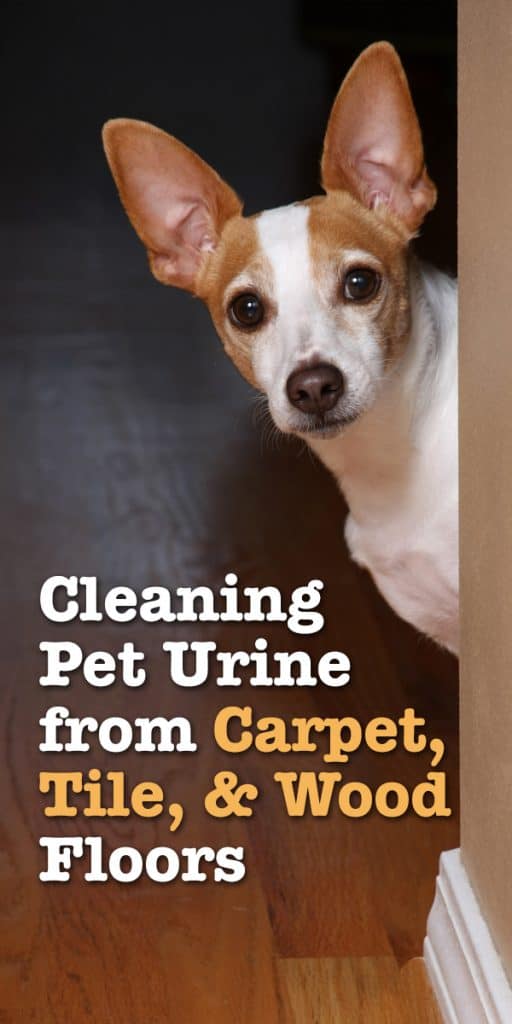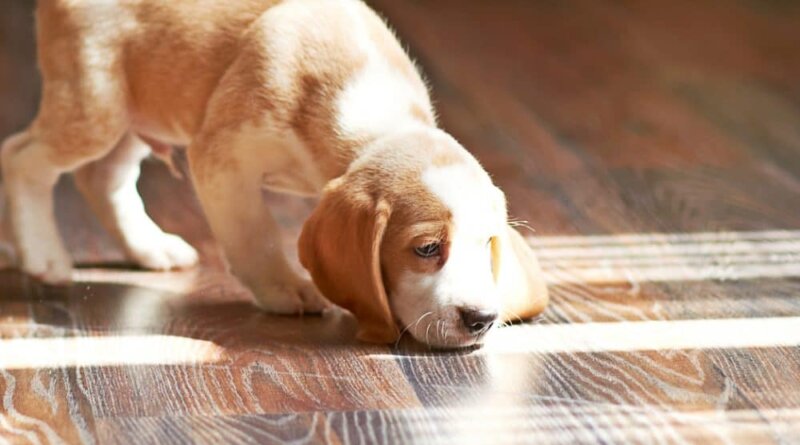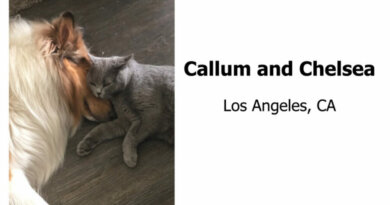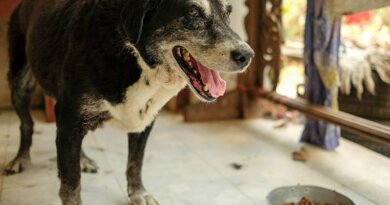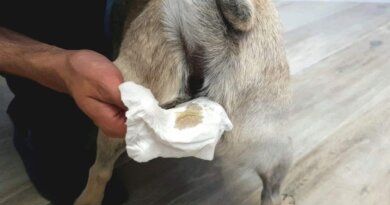Urine Trouble! Cleaning Pet Stains from Carpet, Tile, & Wood Floors
Cleaning pet messes is a concern of every dog owner. To keep your home smelling fresh and prevent repeat offenses, it’s important to clean properly. Here’s how!
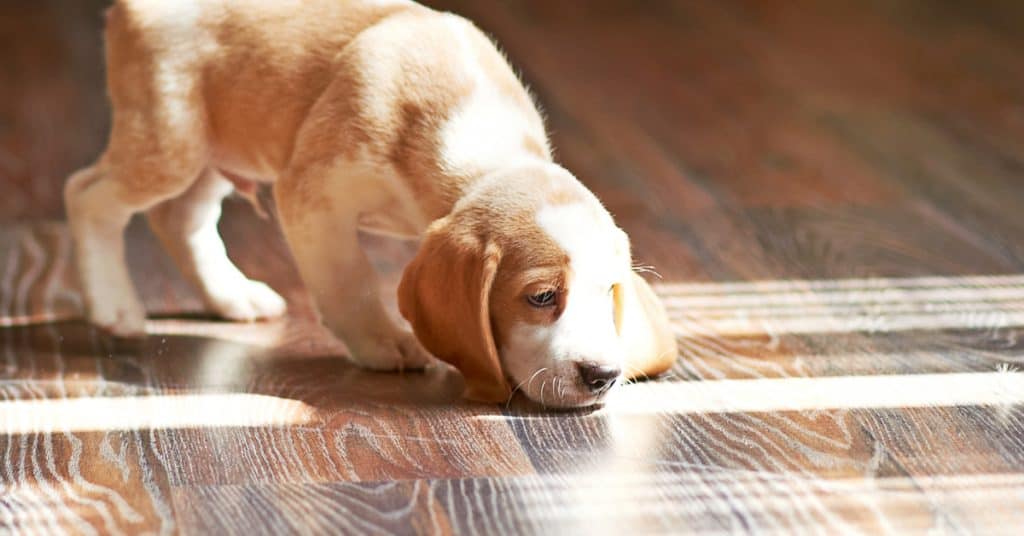
Whether you’re potty training a puppy, living with an older dog, or got stuck in traffic and didn’t make it home to let the dog out in time, accidents are going to happen.
So, the key to keeping a fresh, clean home – and to preventing repeat offenses by your dog – is to locate the mess as soon as possible and clean it thoroughly. And, depending on the type of flooring in your home, different messes call for different cleaning methods.
First, Locate the Mess
Most of the time, it will be easy to locate your dog’s mess. But, from time to time, you’ll know an odor is coming from somewhere but won’t be able to trace it by sight or smell alone.
Urine contains natural salts and proteins that become more concentrated after it has dried. These salts become solid, causing the stain to emanate more odor than a recent accident.
Blacklight flashlights, or urine detectors, can help you locate where a hidden odor is coming from by emitting UV light that illuminates protein stains. Bodily fluids fluoresce under black light, helping you to locate pet stains even when they’ve dried or can’t be seen with the naked eye. Even when no noticeable odor is present, it’s a good idea for pet owners to turn off the lights and scan the home with a urine detector periodically as urine also contains pheromones that serve as an attractant, leading to repeat accidents inside the home.
Once you locate your pet’s urine, a complete and thorough cleaning is essential. But, because no single cleaning method works for all floor types, thoroughly cleaning your carpet, tile, and hardwood flooring will involve different products and procedures.
Cleaning Carpets:
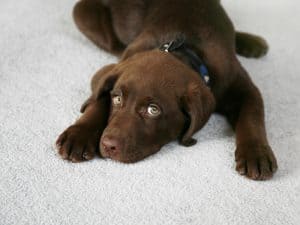
Cleaning dog urine from carpeting requires several steps. Because carpeting is typically absorbent and indoor carpeting includes a layer of padding, simply blotting urine from the top layer of carpeting will not be sufficient.
1. First, soak up any urine using paper towels or a dry absorbent cloth. Don’t rub back and forth, but press down firmly on the spot. Laying down your towel and stepping on it is an easy and effective way to do this.
2. Using a carpet cleaner solution made especially for pet stains, like Unique Natural Products’ Carpet Shampoo & Spot Remover, spray or pour the cleaner directly onto the carpet. You’ll want to put down enough solution so that it reaches deep into the carpet and the padding below.
3. Use a carpet-safe scrub brush to work the solution deep into the carpet fibers. Allow the carpet cleaner to dry as directed, then vacuum the area to remove anything left behind.
4. If a pet stain remains visible, repeat the steps above as necessary.
Once you’ve cleaned the area by soaking with an enzymatic carpet cleaner, it’s a good idea to follow up with steam cleaning or a thorough carpet shampoo. Anyone with pets will agree that having a steam cleaner or carpet shampooer at home is well worth the investment.
Cleaning Tile & Laminate:
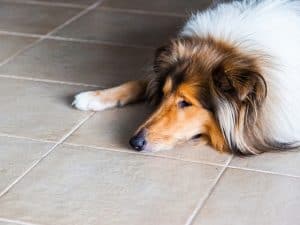
Tile and laminate are the most popular flooring types among pet owners because of their ability to withstand dirty paws, claws, drool, and other pet messes, and because of their ease of cleaning.
To clean tile or laminate flooring, first wipe up any remaining urine, then clean the surface using a pet stain & odor remover as directed. (We use and recommend Unique Natural Products Pet Odor and Stain Eliminator. To properly eliminate messes you have to remove both the odor and the stain, and Unique cleaners use a blend of naturally occurring, non-pathogenic bacteria (like you find in your yogurt) and enzymes whose food source is the animal waste that is causing the stain or odor to do exactly that. Seriously, try it – you’ll be amazed!)
If the urine has reached the grout, spray or pour the cleaning solution directly into the grout. Then, using a wire brush, scrub the grout to reach any cracks or crevices into which the urine may have seeped.
If your home is tiled with an uncoated or porous tile, like terracotta or natural stone, follow the grout cleaning instructions above over the entire tiled area where urine has soaked in.
After the floor has dried completely, use a urine detector flashlight to ensure all urine has been successfully removed.
Cleaning Hardwood:
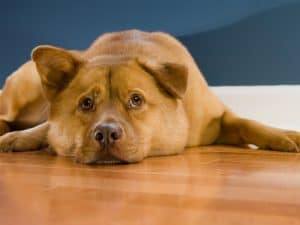
Pet owners with hardwood floors in the home are highly advised to apply a water-resistant polyurethane sealer to prevent damage from urine, drool, and other pet-related stains. Pet urine can very quickly damage genuine hardwood floors, requiring costly repair or replacement.
Still, even sealed hardwood floors must be cleaned as quickly and as thoroughly as possible after an accident.
To clean hardwood floors, wipe up any visible urine, then thoroughly clean using a pet stain remover made especially for hardwood floors, like Simple Solution Hardwood Stain & Odor Remover. Be sure to follow cleaning product instructions carefully to avoid further damage to hardwood flooring.
No matter which type of flooring you have in your home, thoroughly cleaning your pet’s urine with a cleaner made especially for the unique properties of pet stains and odors will ensure a fresh-smelling, clean home and will help prevent future accidents in the same location.
Found this article helpful? Pin it!
